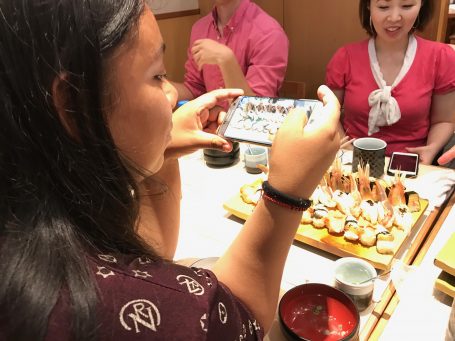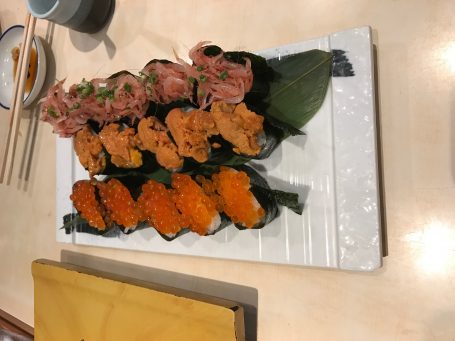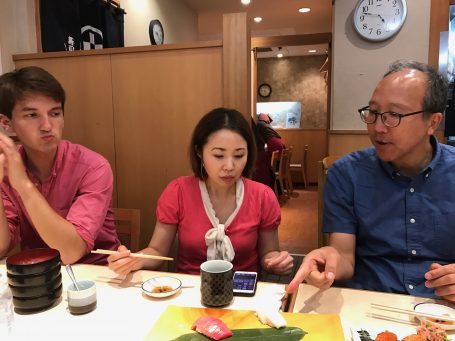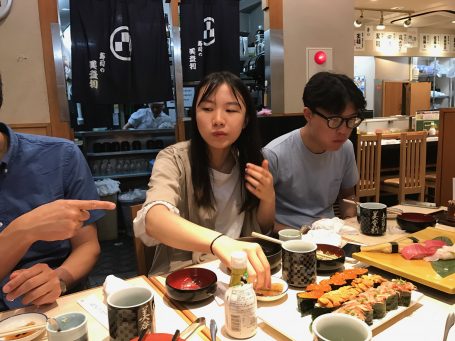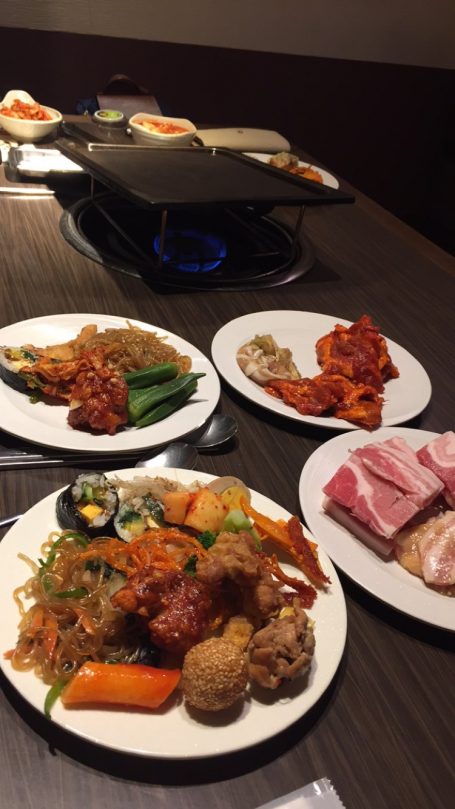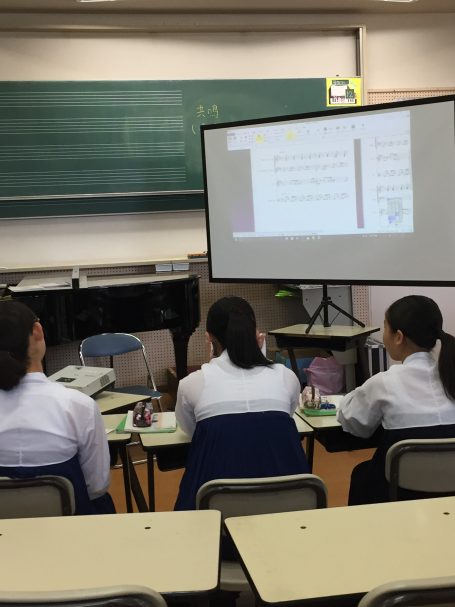By: Geyu Chen
On June 8th, it is the third time we check in to Sakura Hotel Jimboocho, or “home sweet home” as said by one of our members. Everything remains the same and familiar and everything is no longer fresh and interesting – the front desk with worldwide beer selection in the fridge, the umbrella stands crowded by those bought from convenience stores with a few coins by previous residents here. And now, after spending 2 weeks in Tokyo, Yamanaka, and Kansai area, it is time for us to leave. I feel anxious about the farewell dinner.
After a free day back from Kansai, on June 9th, we walked fast to the Liberty Tower of Meiji University. I was nearly running, without being guided by Google map which I needed on the first day of the meeting. The wrap-up session was held by Prof.Kurashige and Rio, which reminded me that our days here are not only a tour but a course, a research study as well. Then we took the elevator to the top floor and walked into the meeting room.
People were giving speeches, but my mind was blown away. I can’t believe the time went so fast that we are forced to say goodbye. Everything was flooding up onto my eyes. The good time we went to 鳥貴族 (torikizuku), a traditional Japanese tavern or bar where you can order drinks or teriyaki at a very low price but very decent quality, and for the first time introduced ourselves to each other; the good time after at karaoke; the exciting and refreshing time when all of Meiji and USC students were grouped up on the bus heading to Yamanaka, expecting the Fuji mountain shining its snow top cover under the gently bright sunshine. The nervous time on the second morning of 合宿 (がっしゅく Gasshyuku), when everyone was busy preparing presentations collaboratively. Time was flying so fast, not even allowing us to talk to every Meiji student. I still have so many stories to tell, and want to listen far more.
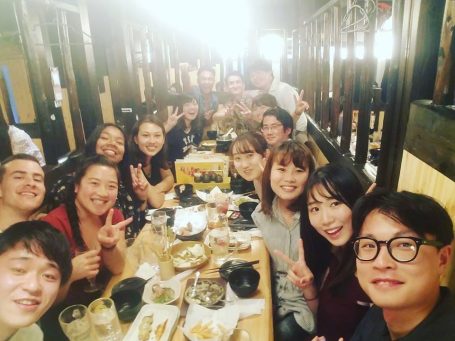
@ 鳥貴族 (torikizuku), group selfie
Tokyo is too big to explore every its station and corner, and time is too short to say goodbye.
Refocusing my mind back to the farewell meeting – it is nearly over. We did toast 乾杯 (kanpai) just like the first day that we been here for the opening ceremony. And we did the farewell ceremony gesture together with a “yo” shouting out again just like the last day we dismissed after the 合宿.
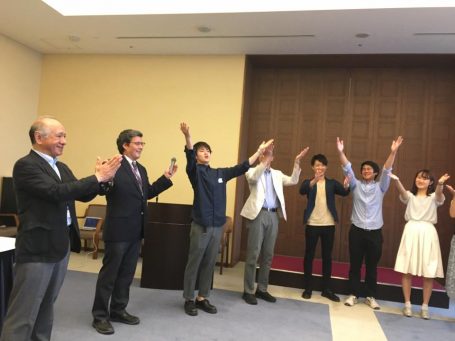
@ Meiji Liberty Tower meeting room, Yu is guiding us for the farewell clapping
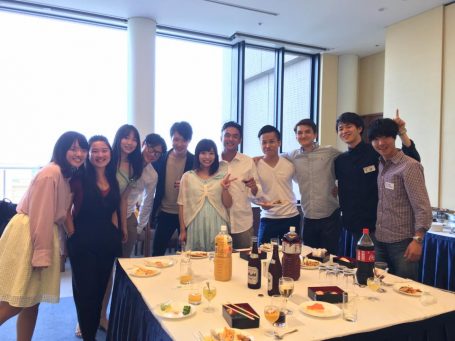
@Meiji Liberty Tower, Farewell dinner
Meiji students were making memorial pamphlets for each of us with our most interesting picture on the cover and goodbye memos from every Meiji student inside. It was a most impressive gift received, eclipsed what we had prepared from the USC bookstore rashly. I would definitely choose a better one if time and go back again.

@ Farewell dinner, Ruby and Yu with his little pamphlet
Throughout these two weeks, we learned so much about these Japanese particular customs. Though without knowing the actual meaning of them, we at least learned how to respect and found a way to fit ourselves into the Japanese society. This is considered to be very important throughout our studying and researching trip oversea.
Thank you and goodbye Meiji friends, goodbye Jimboocho, and goodbye Japan. I will miss everything here tomorrow, and every happy face of each of you.

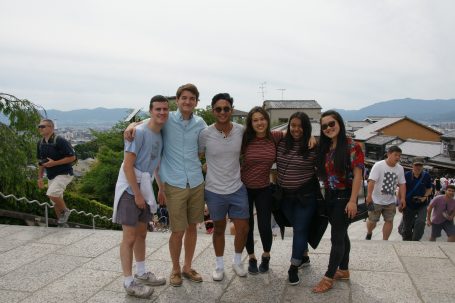

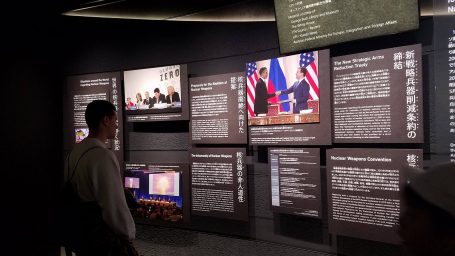
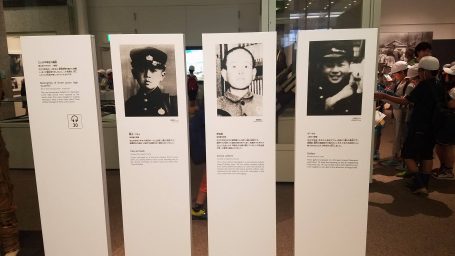

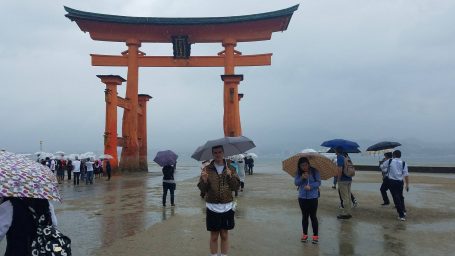
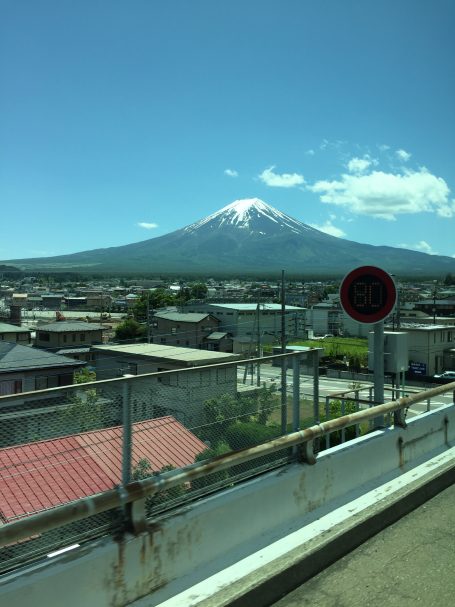 Once we arrived, after unpacking and settling down, we had some time to explore the Meiji University owned lodging and our surroundings. We decided to play some tennis but after about 15 minutes of doing so, we were all tired and ready to get ice cream. After walking down the main street for about 20 minutes we decided to get some Shingen Mochi flavored Ice cream. I didn’t expect to like the flavor as much as I did but I loved it!
Once we arrived, after unpacking and settling down, we had some time to explore the Meiji University owned lodging and our surroundings. We decided to play some tennis but after about 15 minutes of doing so, we were all tired and ready to get ice cream. After walking down the main street for about 20 minutes we decided to get some Shingen Mochi flavored Ice cream. I didn’t expect to like the flavor as much as I did but I loved it!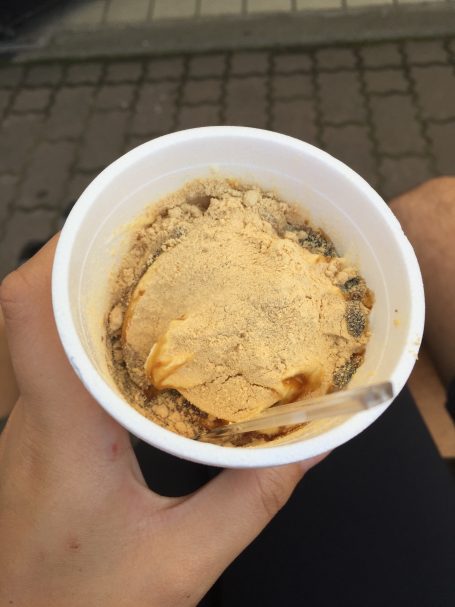
 Due to all of his help, we invited Mr. Fujii to join us for dinner and expressed our gratitude with a bottle of sake. We enjoyed our dinner again and the rest of the night included us writing our names in Japanese calligraphy, another comforting bed, and another fun drinking party where we celebrated a fun weekend.
Due to all of his help, we invited Mr. Fujii to join us for dinner and expressed our gratitude with a bottle of sake. We enjoyed our dinner again and the rest of the night included us writing our names in Japanese calligraphy, another comforting bed, and another fun drinking party where we celebrated a fun weekend.